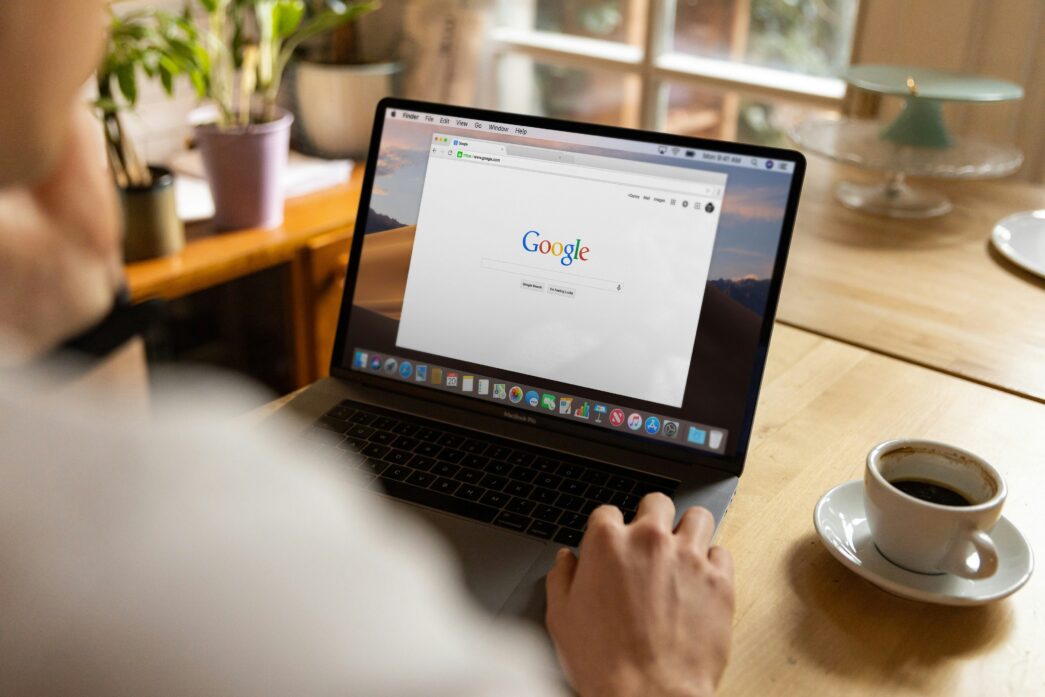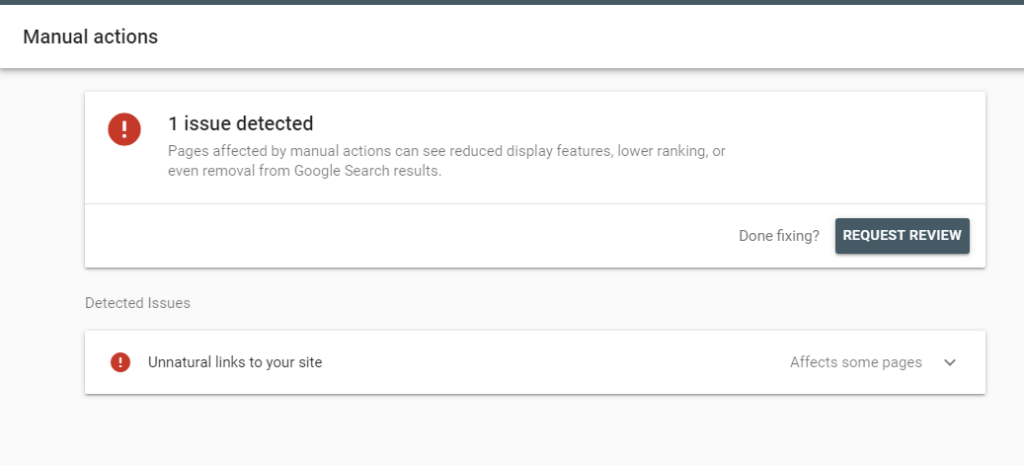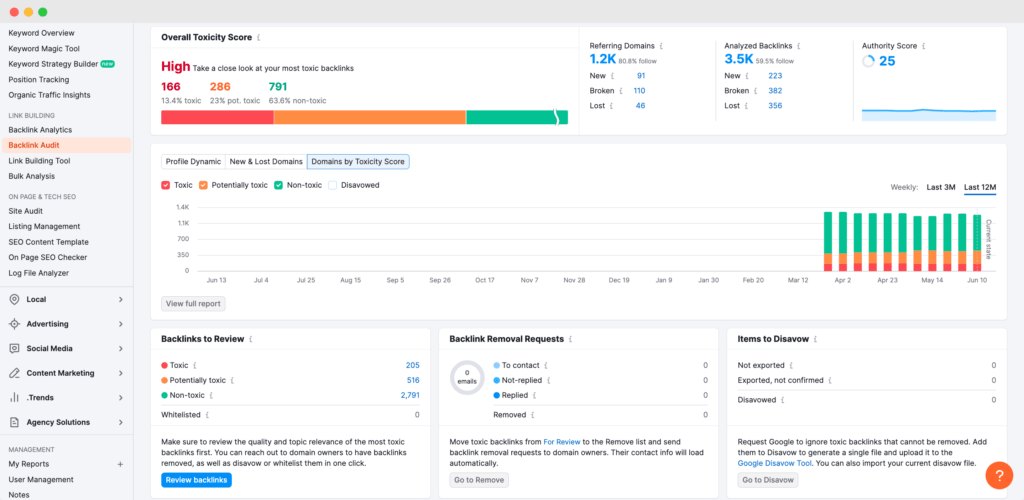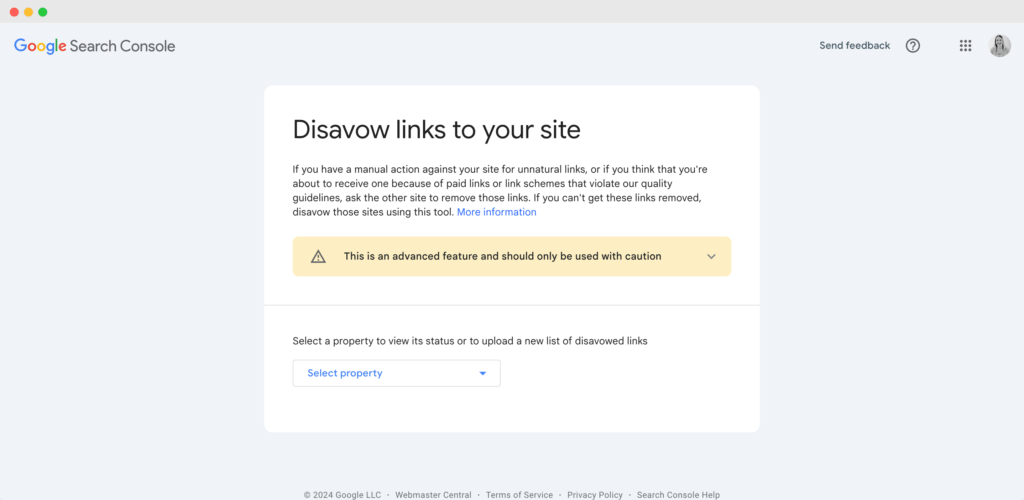
“Google penalty… Manual action… Unnatural links.”
(Oh, gosh! What do we do now? How long will it take to recover?)
It’s a horrible feeling. For a business owner, manager or marketing professional, having your website get hit by a Google penalty can be one of the most terrifying experiences of your career.
It can take a lot of work and expertise to bring about a rapid recovery with minimum loss of legitimate and valuable online assets. This is complex and dangerous territory and it’s best left to a professional SEO penalty recovery agency. But there are some basic guidelines I use to help non-SEO specialists understand what needs to be done, at the strategic level.
What is a Google Penalty?
Google penalties are essentially punishments for websites that violate Google’s webmaster guidelines. These guidelines are in place to ensure a high-quality search experience for users.
There are two main types of Google penalties:
- Algorithmic penalties: These are automated actions taken by Google’s algorithms to lower the ranking of websites that exhibit suspicious or manipulative SEO tactics. These penalties can happen suddenly and may not be entirely clear-cut.
- Manual penalties: These are issued by human reviewers at Google who have identified a clear violation of their guidelines. You’ll typically receive a notification in Google Search Console outlining the specific issue and the steps needed to resolve it.
The ultimate goal of both types of penalties is to discourage websites from using black-hat SEO tactics that can negatively impact user experience. By penalising such websites, Google keeps its search results relevant, trustworthy, and helpful for users.
The different types of manual actions are:
- Unnatural links to your site
- Cloaking and/or sneaky redirects
- Pure spam
- Site abused with third-party spam
- User-generated spam
- Spammy free host
- Hidden text and/or keyword stuffing
- Structured data issue
- Unnatural links from your site
- Thin content with little or no added value
- News and Discover policy violations
- Cloaked images
- AMP content mismatch
- Sneaky mobile redirects
A very common Google penalty is the one for unnatural link building. Google uses links to measure the topic and value of pages on the web and it was perhaps inevitable that some people would build links to pages they wanted to do well in search results, in an attempt to manipulate those results.
Google’s algorithm has been capable of automatically detecting and penalising websites with unnatural-looking links pointing at them at least since its first “Penguin” update in 2012.
Google also has a team of people whose job it is to identify unnatural links and penalise the websites they point to with a manual spam action. There is even a handy form where your nasty competitors can report you to Google (possibly after building hundreds of spammy links to your website over a long period just to make sure). To combat this problem, you can use tools like Spam Score Checker to monitor the health of your link profile and avoid getting in trouble with Google.

A Google penalty is typically diagnosed after receiving a notification from Google Webmaster Tools like the one above. If Google Webmaster Tools is not being properly monitored, a penalty is usually identified after observing a sharp decline in traffic, either for particular keywords or pages (indicating a “Partial” match penalty), or across the board (suggesting a “Site-wide” match). Further investigation reveals that the drop in traffic is restricted to Google traffic and there you have it: Your site has a Google penalty. (Bing sometimes issues penalties too but it is not nearly as aggressive as Google in its approach).
A Google manual spam action or penalty on a business website can have a severe impact on that business. It may also be bad for your health: if you are a business owner or search marketing professional then discovering a Google penalty really could be one of the most stressful and disturbing experiences of your life. That’s really not nice Google. Seriously.
Recovering From A Google Penalty
- Recovering from Google penalties involves addressing issues that violate Google’s webmaster guidelines (manual) or triggered algorithmic filters (sanctions).
- Start by identifying the penalty type and use Google Search Console to diagnose the issue.
- Make the necessary corrections Recovery timelines vary from a few weeks to a few months, but focus on fixing the problem and requesting reconsideration (manual penalties).
Let’s go into more detail on that…
How to Recover from a Google Penalty that Involves Unnatural Links
If you’ve been hit by a manual action from Google and it’s a penalty for unnatural links then here’s what you do to recover (and prevent future penalties):
1. Assess the Situation
- Stop. Think. Breathe. You can’t rush this
- It’s important – get it right – from the start
- Seek expert guidance from a good SEO agency
- An agency has much more experience than your in-house SEOs
- Check Google Webmaster Tools for a manual action or alert
- Make sure it is a penalty! (have you blocked your site to robots?!)
- Identify the type of penalty – manual action or algorithm?
- Identify the keywords and pages that are hit the worst
You need to make a plan… Your boss is sure as hell going to want to see a plan ASAP! This 10-step process should form the basis of your penalty recovery strategy.
If you don’t have a good SEO agency, you should consult one at this point. Don’t rely on your in-house SEO people. Agencies deal with penalties all the time, with up-to-date experience of the latest changes. Your in-house SEO team will only have limited and possibly outdated experience. This is a reminder that you really need a good agency (like us) to do SEO properly in the first place. In-house SEO teams often lack the depth and breadth of experience to lead effective SEO campaigns. Google’s policies are increasingly complex and you need people who have current experience working on multiple campaigns.
2. Do a Link Audit
- Analyse the entire link profile
- Check each homepage’s PageRank and keyword anchor text
- Prioritise links for removal or protection: good, bad, neutral
- Protecting natural links is also vital!
- This is best left to SEO professionals
- Invest in a tool like Semrush or Ahrefs to help you (or your chosen agency)

This is the most important and dangerous step in the process. You don’t want to remove or disavow the healthy links that your website relies upon for its valuable organic search rankings! Ideally, each domain that you have a link from needs to be manually scrutinised in detail for signs of past or potential future problems. This process can be done without that in-depth manual scrutiny, but you will usually miss bad links the first time around – and worse still you will surely remove good links that you may never get back. Don’t do that.
3. Outreach to the Websites in Question
- Find contact details from each site – domain registrar, etc.
- Contact sites to request removal of the links – log the date of each request
- Follow up if the website doesn’t respond
Don’t underestimate the importance of this step and don’t execute it without proper planning and preparation, or you’ll suffer from poor performance. You need to carefully consider details such as who the email will be from and exactly how you’re going to keep the recipient on-side and persuade them to remove links. You do not want to make enemies at this stage.
4. Review your Work
- Have a significant number of links been removed?
- Identify links that you were unable to remove
At this stage, you will be grateful that you kept detailed records throughout step 3. Penalty recovery isn’t something you can just do. It needs to be planned meticulously and executed proficiently and professionally. You need to take stock at each stage – and particularly after stage 3, outreach, so you understand what progress you have made and what needs to be done next. Most importantly, you need to be very sure at this point which remaining links should be disavowed.
5. Disavow and Reconsideration
- Disavow remaining bad links
- Submit a reconsideration request
This is really two steps in one but they go hand in hand. Submit the disavow file first to the Disavow links tool, then the reconsideration request. The detail depends very much on the nature of your individual problems. You can do further serious damage at this point. Seek professional advice.

If you don’t know what you’re doing, you shouldn’t be doing this at all. Hire a good SEO agency to help you. But if you are forced to try this by yourself then I suggest you disavow whole domains rather than individual links. You may have missed multiple links on the same domain, or the domain could have canonical problems leading to duplicate pages with duplicated bad links.
There are lots of circumstances in which you may not need to submit a reconsideration request – but that is beyond the scope of this article to discuss. If in doubt, submit a reconsideration request anyway, but again, you should seek expert advice.
6. Evaluate
- Monitor results at keyword and page level
- Look for a response message in Google Webmaster Tools
Depending on the nature of your penalty, you may not notice any change if and when you make a recovery. Likely, Google was just ignoring some of your bad links – so removing them won’t precipitate a recovery. If your rankings were based on link spam then you won’t get them back quickly and easily.
You need a proper SEO strategy now. It will take longer and it’s harder and more expensive. But does your business really want to go through this again?
Having done step 1 properly and thoroughly, you will know which pages and keywords to monitor for improvements!
7. Learn from your Mistakes
- Try to assess exactly what led to the penalty
- Seek to avoid it happening again
You need to get to the issues underlying your penalty. Was it a flawed link-building strategy? A bad SEO agency? Has your website been the victim of a hostile SEO campaign? You need to dig even deeper. This is really important. You don’t want it to ever happen again, right?
Genuine cases of hostile SEO attacks are still relatively rare at the time of writing. But I expect them to increase dramatically as Google continues with its stupid policy of penalising unnatural links. It’s cheap and easy to cause a Google penalty – and the knowledge of how to achieve it is growing. In various ways that I won’t go into, Google makes it easy for anybody with a little bit of SEO knowledge to launch a hostile campaign. All of this can only encourage the deployment of hostile SEO campaigns out there in the wild. So get used to seeing link penalties and hostile SEO affecting all sorts of websites.
If your business relies on organic search then your SEO agency should be pro-actively monitoring your link profile and using prevention rather than cure to deal with the very real threat of Google penalties. If they’re not reporting on your overall link profile, on a monthly basis, then they are probably not monitoring it, even if they say they are. Unnatural link penalties are a real threat to every site – no matter how large, no matter how legitimate. Everybody needs to be constantly vigilant.

8. Embrace White-Hat Natural SEO
- Build linkable content
- Seeding and outreach
- SEO fundamentals
- A holistic SEO strategy
- A content-driven strategy
If you’ve been penalised by Google then your SEO strategy probably went wrong somewhere. It may be time to go back to basics. That means you need a content-based strategy and you need to leave behind unnatural practices.
Welcome to the world of real SEO! And to the world of content marketing – which is part of your whole overlapping content, search and social media ecosystem. If you don’t have an overlapping, integrated strategy then you’re doing it wrong.
Proper SEO and digital marketing take time and require sufficient investment. But the positive impact is far more powerful, enduring and sustainable than cheap SEO, which will inevitably get you penalised sooner or later. If you’re outsourcing SEO to the cheapest provider then there’s your problem. It’s all about quality now, not quantity.
9. Monitoring and Management
- Prevention
- Rapid response
- Actively and constantly manage and monitor your link profile
Monitoring and management! Did you get that? If you’d had a proper, holistic SEO strategy in place, with a content foundation and a serious monitoring and risk management process, then you may never have been penalised. Google does some crazy things and certainly makes some stupid mistakes, like wrongly identifying links from Moz as unnatural. Some innocent sites have genuine link profiles that simply look unnatural. But for most websites, it is possible to avoid any problems.
10. Repeat!
- It’s not over – it’s never over, SEO never ends
- If your recovery process is unsuccessful or the outcome is unknown: Repeat the process – and remain vigilant
SEO is an endless process, not a project with a finite lifespan. The same is true of its constituent parts and that includes managing the risks associated with unnatural links, manual web spam actions, and other forms of Google penalty. You can’t take a break from SEO risk management, it’s much too important.
4 Ways to Prevent Google Penalties in the Future
1. Focus on User Value
This is the cornerstone of avoiding penalties. Google prioritises websites that provide a valuable experience for users. Here’s how to achieve this:
- Content is king: Create informative, well-researched content that solves users’ problems, answers their questions, and keeps them engaged.
- Target the right keywords: Conduct proper keyword research to understand what users are searching for and integrate those keywords naturally throughout your content.
- Prioritise user experience: Ensure your website is easy to navigate, mobile-friendly, and loads quickly.
- Optimise for readability: Use clear, concise language, proper formatting, and relevant visuals to enhance user experience.
- Keep your content concise: Try to say more in fewer words. Writer content concisely via a summarizer or give it a try yourself to make it easier for readers to understand.
2. Build Backlinks Naturally
Backlinks are essentially votes of confidence from other websites to yours. Google considers the quality and relevance of these backlinks when ranking websites. Here’s how to build them naturally:
- Create link-worthy and shareable content: Develop content so valuable and informative that other websites naturally want to link to it as a credible source.
- Guest blogging: Contribute guest posts to high-authority websites in your niche. Ensure the content is relevant and high-quality, and include a natural backlink to your website.
- Online reputation management: Build positive relationships with industry influencers and bloggers who might be interested in mentioning your website.
- Focus on brand building: As your brand reputation grows organically, so will backlinks from relevant sources.
- Broken link building: Find relevant websites with broken links on pages related to your content. Offer your content as a replacement, potentially earning a backlink in the process. This technique requires research but can be a great way to acquire high-quality backlinks.
3. Stay Updated on Google’s Guidelines
Google’s Search Console provides a wealth of information on webmaster guidelines and best practices for SEO. Here’s how to stay informed:
- Google Search Central: Familiarise yourself with the Google Search Essentials section. This outlines what Google considers spammy or manipulative SEO tactics.
- Follow the Google Search Central Blog: Stay updated on the latest algorithm updates and SEO best practices by following Google’s official Blog – you can even join them on LinkedIn.
- Industry news and resources: Follow reputable SEO blogs and publications to stay informed about the ever-evolving SEO landscape.
4. Follow these Best Practices for SEO
- Mobile-friendliness: Google prioritises websites that offer a seamless experience on all devices, especially mobile. Ensure your website has a responsive design that adapts to different screen sizes, allowing users to navigate and consume content easily.
- Fast loading times: Website speed is a crucial ranking factor. Slow loading times can significantly hurt your SEO. Focus on optimising images (reduce file size without sacrificing quality), minimising unnecessary code, and leveraging caching mechanisms to ensure your website loads quickly on desktops, tablets, and smartphones.
- Clear site structure: A well-organised website with a clear hierarchy makes it easier for search engines (and users) to navigate and understand the relationships between your pages. This includes using descriptive and concise URLs, internal linking strategies (linking relevant pages within your website), and a well-defined sitemap that outlines the website’s structure.
- Valuable, informative content: Content is king in SEO. Focus on creating high-quality content that genuinely helps users, establishes you as an authority in your niche, and signals value to search engines. This means content that is informative, well-researched, solves user problems, answers their questions, and provides unique insights.
- Target relevant keywords: Conduct thorough keyword research to identify the terms your target audience is searching for. Don’t just stuff keywords into your content; integrate them naturally throughout your writing while prioritising user readability and maintaining a natural flow.
- Content variety: Cater to different user preferences by creating a mix of content formats. This could include blog posts, in-depth articles, infographics, explainer videos, case studies, or even user guides.
- Establish E-E-A-T: Create content by experts, ensure content authority and trustworthiness, and build website trust.
By focusing on these preventative measures, you can create a website that Google recognises as valuable and trustworthy, significantly reducing the risk of penalties. Remember, SEO is a long-term strategy, and prioritising user value is the key to sustainable success.
3 Reasons We Disagree with Google Penalising Websites for Unnatural Links
1. Google Penalties Are Unfair
Most Google penalties are imposed for “unnatural links” pointing at your website – but you have little or no control over who builds links to your website so getting a penalty can seem very unfair.
Businesses with websites hit by Google penalties are often forced to spend a lot of money with Google via AdWords to compensate for lost organic search traffic and sales. More money for Google – but a lot of frustration for the business owner.
Perhaps Google thinks that it can also force website owners to install Google Adsense ads – by creating a worsening sense of fear about linking to other websites in the normal way.
I remember a time when websites freely linked to each other, without fear of persecution. Does anybody else remember that links are the entire point of the web? Links are literally the structure and fabric of the web. They are its highways and represent a big chunk of its whole purpose and value. They are also a huge part of the web’s organic beauty. Can we have our web back please Google? We liked it better the way it was before everybody got so scared of Google.
If your website has a penalty then it is increasingly likely that a third party, such as an SEO agency – or even a hostile competitor – has built harmful links to your website. You may have had no idea what was happening, so it’s quite harsh for Google to cripple your business – but that won’t stop them from doing it. They do it all the time. Google keeps changing its guidelines too, so it’s possible that your bad links were perfectly legitimate when they were built. It’s pretty confusing… in fact, it’s downright stupid!
2. Google Penalties are Stupid!
As long as people can sell products by being found in search engines, SEO will never die. SEO can be beautiful, can be creative, can be perfectly clean. It can help businesses to thrive and it can improve the experience for customers. SEO can be a really good thing.
But it’s pretty obvious that Google is trying hard to kill SEO as an industry – perhaps in the hope of diverting marketing budgets to Google Adwords where they make most of their money. But they will fail.
You see, Google is making a big mistake. Because no matter how hard they try, in crushing one element of SEO they merely shift the priorities of SEO campaigns elsewhere. SEO won’t go away. It will simply shift focus – to content marketing, to link removal, to the next big thing, which may well eat up even more budget than the last big thing. Marketing budgets will follow the trends, they always do. I’m sorry Google, but you can’t stop people investing in stuff that doesn’t make you money. It’s impossible. Even you don’t have that much power.
The growing demand for link removal and penalty recovery services is such that Google has created yet another huge industry within SEO. It is an an industry motivated by one of our most powerful and primal instincts: fear!
Did you notice me promoting my latest SEO service right there? I’m just following the market that Google is creating. You see, as an SEO agency, most of our new clients that come on board now are seeking help to recover from a Google penalty! Just think about that for a moment… How ridiculous is that? It’s crazy. It demonstrates that Google’s futile attempts to kill SEO simply shift the priorities of the industry and increase businesses’ reliance on agencies who have the expertise and experience to deal with the latest thing Google throws at them.
Like other elements of SEO, link removal and recovery is complex and technical. It can be difficult. It can be dangerous. It is important and it needs to be done properly. So by imposing more and more penalties Google is ensuring the growth of SEO and the survival of SEO agencies. You hear that, Google? You’re not killing us, you’re helping us! You’re creating more demand for us and reliance upon us than ever before and for really stupid reasons.
Google, if you want to deal with unnatural links, why not just ignore them automatically? You sure can detect them. Hurting and scaring businesses and making those links a serious problem for them reveals a really nasty, unfriendly side to Google. It also reveals that Google doesn’t merely want to resolve the problem of unnatural links – it wants us to be scared of Google. I find that quite disturbing.
What’s more, Google is also promoting the growth of nasty link-building, as I will now discuss:
3. Hostile SEO: The Growing Threat
Google’s campaign of fear obviously increases awareness of the damage that can be done by unnatural links and the kind of tactics that cause the most damage – that’s the whole point and it’s very effective, especially when big brands are hit because that’s naturally newsworthy. But the folks at Google simply have not thought this through to its logical conclusion.
What Google is doing is in fact very dangerous. In addition to a continued shift towards content marketing for SEO, which is fine, we are sure to see dramatic growth in hostile SEO campaigns over the next few years -because bad links are being proven to be effective in a very public and publicised way. What’s more, hostile campaigns are likely to become more sophisticated and dangerous as penalties get their post-mortem and, inevitably, get reverse-engineered. (There is a growing pool of sites where you can easily get a link and be fairly sure that link will look suspicious to Google without much effort). So we may see a new Google-fuelled industry emerging and it will be a particularly nasty one. It’s not difficult to create a network of sites with the ability to cause penalties if used in the right way (which is pretty simple now).
It’s pretty easy to weaponise and sell that facility. Google, are you listening? Do you care that you are turning the web into a battleground? I really hope so.
And guess what Google! You’re creating yet another industry that you won’t like too.
Increased risk + increased awareness = yet another suite of services within SEO, including:
- Link monitoring
- Precautionary link removal
- Pre-emptive disavow submissions
Come on Google… you really didn’t see this coming? When Google acts, everybody else reacts. It’s a fact of life. So Google really needs to be more considered and responsible in its actions.
Recovering from a Google penalty with minimum damage is difficult and takes a huge amount of valuable man hours to do properly. (That’s why a lot of SEO agencies will be very grateful to Google, yet again). It is becoming increasingly important to monitor and manage your website’s link profile pro-actively and prospectively, before anything goes wrong and to make sure that nothing does go wrong in the future. The algorithm will just keep on changing and that helps keep the whole SEO industry in business too.
Whether or not you have had a Google penalty in the past, as a business you really do need to manage the risk of a Google penalty now. Because a penalty could be catastrophic for your business and indeed it effectively be indefinite and potentially terminal for a business.
Prevention is so much better than cure because it can take many months and several attempts to recover – and in such a desperate situation the tendency is to sacrifice a lot of links that may have some value, in order to increase the odds of a recovery.
And guess what? Somebody is going to have to do something to replace those lost links, be it through content marketing or other SEO tactics. So thanks again Google for continuing to support the SEO industry, including its darker and more ridiculous elements, with your ill-conceived campaign of fear.
In Conclusion
If you’re reading this article then SEO must be important to you. It’s essential to have an active monitoring and risk management programme. Otherwise, sooner or later, it’s back to the start of this article for you. Back to those horrible feelings of fear and uncertainty. In most cases it’s avoidable. So please take a proactive approach to SEO risk management.
Google penalties can significantly hinder your website’s visibility and traffic. However, by prioritising user value throughout your SEO efforts, you can significantly reduce the risk of encountering them.
Here are the key takeaways to remember:
- Focus on user value: Prioritise creating high-quality content that genuinely informs, helps, and engages your target audience. This establishes trust and builds a loyal user base, which is a core principle of good SEO.
- Follow Google’s guidelines: Familiarise yourself with Google’s Search Console guidelines and stay updated on algorithm changes. This ensures your website adheres to best practices and avoids tactics that might trigger penalties.
- Embrace long-term strategies: Building a strong online presence takes time and dedication. Focus on creating valuable content, acquiring backlinks organically, and establishing your website as a trusted authority in your niche. By prioritising long-term SEO strategies, you’ll create a sustainable foundation for organic growth and avoid the pitfalls of quick-fix tactics that can lead to penalties.
Remember, SEO is an ongoing process. By following these principles and consistently providing value to your users, you can build a website that thrives under Google’s ever-evolving search algorithms.
If you have any concerns about your SEO, or if you need advice, please get in touch. Stay safe and penalty-free.



